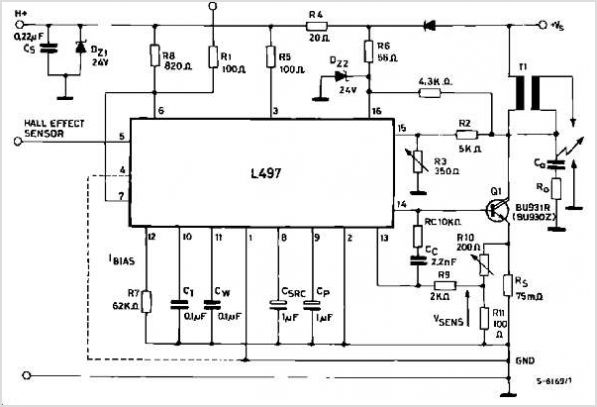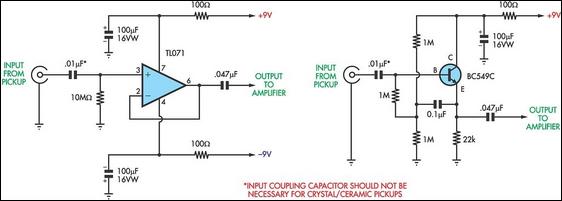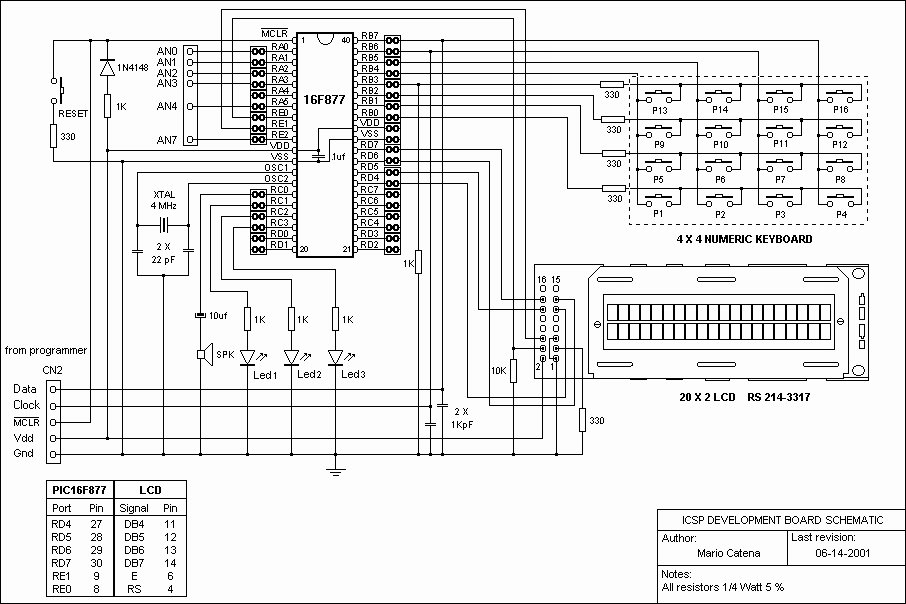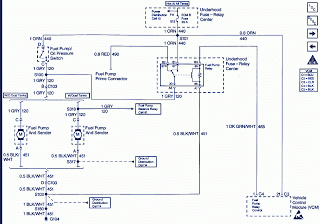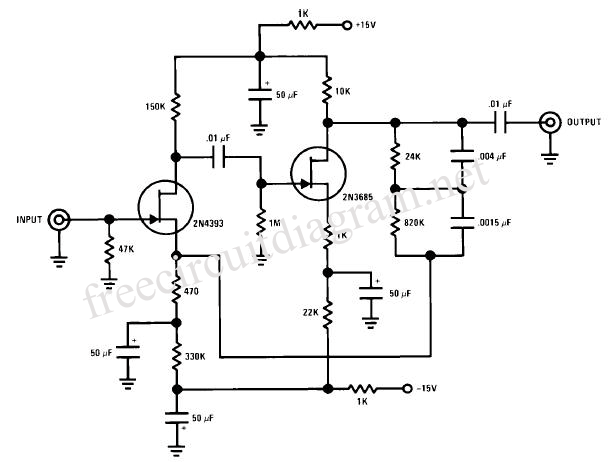
Pick
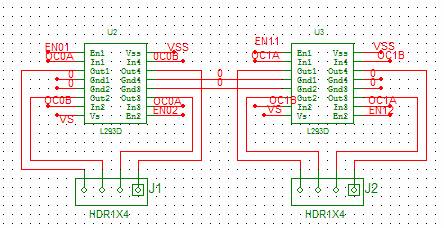
The second component is a Signal Distribution Board that transmits voltage, ground, and various signals throughout the system. This board is based on the design found on its dedicated page: Signal Distribution Board. The 7400 pick system is equipped with two stepper motors, each containing two coils. To manage these motors, a total of four H-bridges will be required, with two H-bridges allocated for each motor. The L293D integrated circuit (IC) includes two H-bridges and appears to be suitable for this application; previous tests have successfully driven one motor on the 7300 pick system using this IC. The OC#A and OC#B pins are designated as PWM (Pulse Width Modulation) pins. Although PWM is not strictly necessary for operating the stepper motors, utilizing it allows the microcontroller to perform additional tasks instead of solely managing the motors. The ATmega8 microcontroller has only three PWM pins, making it insufficient for driving the 7400 pick system. Alternative microcontrollers with four PWM channels include the ATtiny2313 and the ATmega16. The pick system features a sensor designed to detect paper sizes, consisting of an array of switches. This sensor accommodates three different sizes: SRA3, 11 x 17, and 8 1/2 x 11. A simple diagram illustrates how the sensor should be interfaced. Additionally, a table outlines the signal values corresponding to the three paper sizes. It is important to note that the integrated circuit monitoring lines 0 to 3 has internal pull-up resistors; thus, when switch 3 is closed on the sensor, it is pulled low. The signal values are as follows: 000 - Paper tray has reached pick height and is half full; 001 - Paper has reached pick height and there is no paper; 010 - Paper tray is nearly at pick height; 011 - Paper tray is lower than pick height; 100 - Paper tray is full (to the top) and has reached pick height; 110 - Paper tray is full (to the top) and is not at pick height; 111 - Paper tray has not yet been raised and is half full. This information regarding paper size, combined with an understanding of the sensors in the pick system and the control of a four-wire stepper motor, leads to the initial version of a pick control program: Pick Control C file (dated 2/21/2007). It is advised that this version should not be overwritten by newer versions, as it serves as a test program to ensure all necessary functions on the pick operate correctly, albeit not in conjunction with the netburner. Future versions will be documented on the corresponding page.
The Signal Distribution Board functions as a critical element in the 7400 pick system, facilitating the distribution of power and signals essential for the operation of stepper motors and sensor interfaces. The use of the L293D IC is particularly advantageous due to its dual H-bridge configuration, allowing for efficient control of the stepper motors. The choice of PWM control via the OC#A and OC#B pins enhances the system's performance by freeing the microcontroller from constant motor management, thereby enabling it to undertake additional processing tasks.
The ATmega8 microcontroller's limitation of three PWM pins necessitates consideration of alternative microcontrollers, such as the ATtiny2313 or ATmega16, which provide the required four PWM channels for optimal motor control. The sensor array for paper size detection is a pivotal feature of the pick system, allowing for accurate monitoring of paper levels and sizes. The interfacing of this sensor is straightforward, and the defined signal values provide a clear framework for understanding the operational status of the paper tray.
The initial version of the pick control program serves as a foundational tool for testing and validating the functions of the pick system. It is essential to maintain this version for reference as newer iterations are developed, ensuring that the core functionalities remain intact and operational. This structured approach to the development and testing of the pick control program will contribute to the overall reliability and efficiency of the 7400 pick system.The second is a Signal Distribution Board that relays voltage, ground, and other signals throughout the pick. We can use this board, and it is modeled on its page: Signal Distribution Board. The 7400 pick system has two stepper motors, both with two coils. To control these, we will need two H-Bridges per motor, or a total of four H-bridges. The L 293D IC has two H-Bridges on it, and appears to be capable; Josh and I (Jeff) have already been driving the one motor on the 7300 pick system with it. The OC#A and OC#B are PWM pins. We do not absolutely need to use PWM to drive the stepper motors, but it does free up the microcontroller to do other things as opposed to babysitting the motors.
The ATmega8 only has three PWM pins, and is therefore not adequate to drive the 7400 pick. The other two easy options with 4 PWM channels are the ATtiny2313 or the ATmega16 The pick system has a sensor for detecting the paper size that is basically an array of switches. For the 3 different sizes, SRA3, 11 x 17, and 8 1/2 x 11, below is a simple diagram of how the sensor should be interfaced to.
Also below is a table that shows what the signal values will be for the three sizes. Note that the IC checking the lines 0 3 has internal pull-ups: so if switch 3 is closed on the sensor, it is pulled low. 000 - Paper tray has reached paper pick height and paper is half full 001 - Paper has reached paper pick height and there is no paper 010 - Paper tray has almost reached paper pick height 011 - Paper tray lower than paper pick height 100 - Paper tray is full (filled to the top) and has reached paper pick height 110 - Paper tray is full (filled to the top) and is not at paper pick height 111 - Paper tray not yet raised and is half full Taking the information regarding paper size, learning how the sensors on the pick system, and understanding how to control a 4 wire stepper motor brings us to our first version of a pick control program: Pick Control C file (dated 2/21/2007) Note that this version should NOT be overwritten by newer versions!
This is more of a test program that makes every needed function on the pick operate correctly, but not with the netburner. Newer versions should appear on this page below. 🔗 External reference
The Signal Distribution Board functions as a critical element in the 7400 pick system, facilitating the distribution of power and signals essential for the operation of stepper motors and sensor interfaces. The use of the L293D IC is particularly advantageous due to its dual H-bridge configuration, allowing for efficient control of the stepper motors. The choice of PWM control via the OC#A and OC#B pins enhances the system's performance by freeing the microcontroller from constant motor management, thereby enabling it to undertake additional processing tasks.
The ATmega8 microcontroller's limitation of three PWM pins necessitates consideration of alternative microcontrollers, such as the ATtiny2313 or ATmega16, which provide the required four PWM channels for optimal motor control. The sensor array for paper size detection is a pivotal feature of the pick system, allowing for accurate monitoring of paper levels and sizes. The interfacing of this sensor is straightforward, and the defined signal values provide a clear framework for understanding the operational status of the paper tray.
The initial version of the pick control program serves as a foundational tool for testing and validating the functions of the pick system. It is essential to maintain this version for reference as newer iterations are developed, ensuring that the core functionalities remain intact and operational. This structured approach to the development and testing of the pick control program will contribute to the overall reliability and efficiency of the 7400 pick system.The second is a Signal Distribution Board that relays voltage, ground, and other signals throughout the pick. We can use this board, and it is modeled on its page: Signal Distribution Board. The 7400 pick system has two stepper motors, both with two coils. To control these, we will need two H-Bridges per motor, or a total of four H-bridges. The L 293D IC has two H-Bridges on it, and appears to be capable; Josh and I (Jeff) have already been driving the one motor on the 7300 pick system with it. The OC#A and OC#B are PWM pins. We do not absolutely need to use PWM to drive the stepper motors, but it does free up the microcontroller to do other things as opposed to babysitting the motors.
The ATmega8 only has three PWM pins, and is therefore not adequate to drive the 7400 pick. The other two easy options with 4 PWM channels are the ATtiny2313 or the ATmega16 The pick system has a sensor for detecting the paper size that is basically an array of switches. For the 3 different sizes, SRA3, 11 x 17, and 8 1/2 x 11, below is a simple diagram of how the sensor should be interfaced to.
Also below is a table that shows what the signal values will be for the three sizes. Note that the IC checking the lines 0 3 has internal pull-ups: so if switch 3 is closed on the sensor, it is pulled low. 000 - Paper tray has reached paper pick height and paper is half full 001 - Paper has reached paper pick height and there is no paper 010 - Paper tray has almost reached paper pick height 011 - Paper tray lower than paper pick height 100 - Paper tray is full (filled to the top) and has reached paper pick height 110 - Paper tray is full (filled to the top) and is not at paper pick height 111 - Paper tray not yet raised and is half full Taking the information regarding paper size, learning how the sensors on the pick system, and understanding how to control a 4 wire stepper motor brings us to our first version of a pick control program: Pick Control C file (dated 2/21/2007) Note that this version should NOT be overwritten by newer versions!
This is more of a test program that makes every needed function on the pick operate correctly, but not with the netburner. Newer versions should appear on this page below. 🔗 External reference
